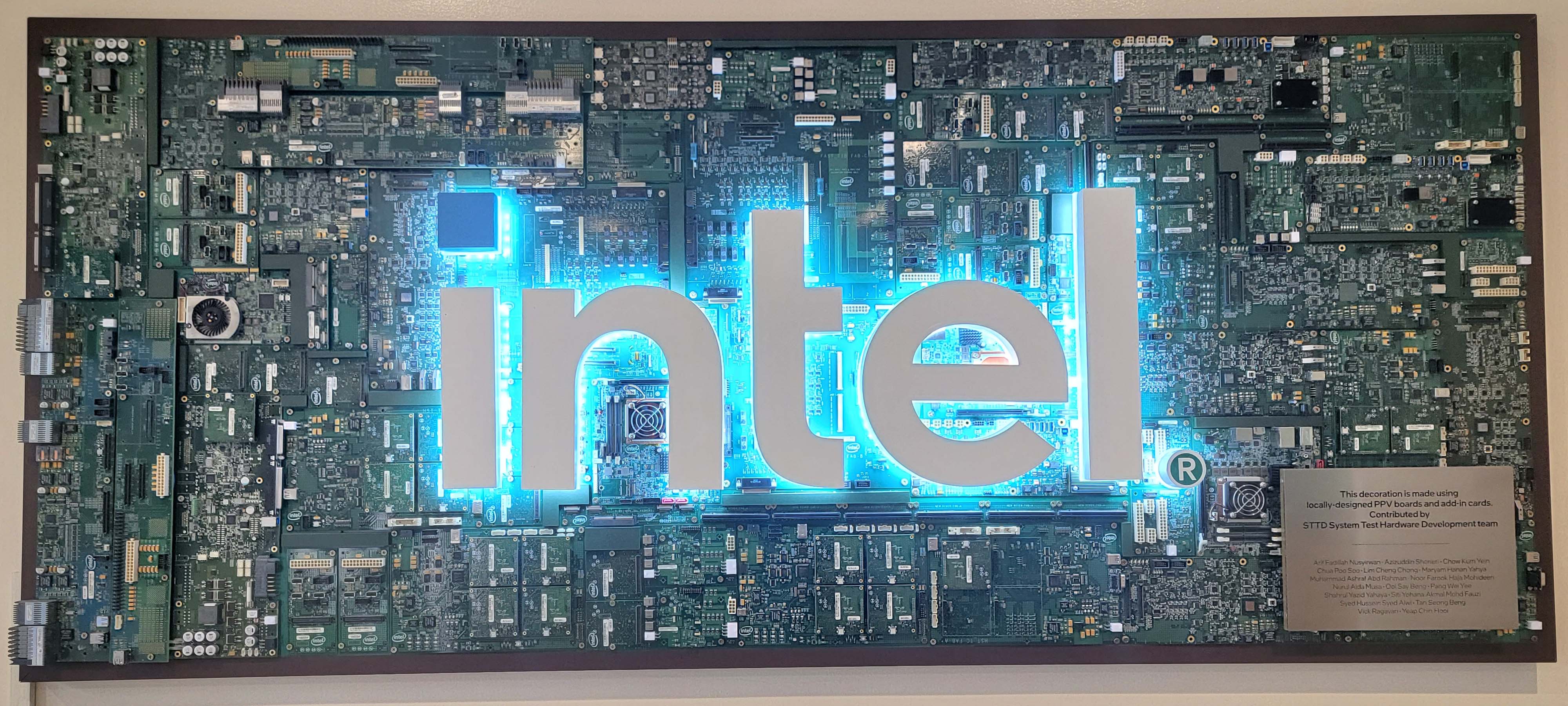Intel announces cancellation of 20A process node for Arrow Lake, goes with external nodes instead, likely TSMC [Updated]

In a surprise move, Intel announced today that it no longer plans to use its own 'Intel 20A' process node with its upcoming Arrow Lake processors for the consumer market. Instead, it will use external nodes, likely from partner TSMC, for all of Arrow Lake's chip components. Intel's only manufacturing responsibilities for the Arrow Lake processors will be packaging the externally manufactured chiplets into the final processor. Intel CFO Dave Zinsser also commented on the matter during the company's discussion at the Citi Global TMT Conference today, indicating the company would 'skip over productizing' the 20A node to reduce capital expenditures and spending. Intel projects it will save half a billion dollars by skipping the 20A node.
The announcement comes as Intel embarks on a vast restructuring in the wake of troubling financial results last quarter. The company continues to lay off 15,000 workers, among the largest workforce reductions in its 56-year history.
The node change comes after Intel initially demoed a wafer of Arrow Lake processors fabbed on the 20A node at its Innovation 2023 event, which indicated the chips were already far along in the development cycle. At the time, Intel said Arrow Lake would come to market in 2024. Since then, industry rumors pointed to the 20A node only being used for a subset of the Arrow Lake family, while the remainder would use a TSMC node. Now it is clear that none of the products will use the 20A node.
Intel says its crucial next-gen 'Intel 18A' node remains on track for launch in 2025. It has now shifted its engineering resources from 20A to the newer 18A node, which the company says was spurred by the strength of the yield metrics for 18A. Intel again noted that it had reached a sub-0.40 D0 defect density (def/cm^2) for 18A, a critical measurement of the yield rate for a process node. A process node is usually considered production-worthy and healthy once D0 reaches 0.5 or below.
Intel will now leapfrog over its 20A process entirely and avoid the capital expenditures required to bring the node to full production. Eliminating the always-eye-watering ramp costs of a new node, particularly one as advanced as 20A, will surely contribute to the company meeting its cost-cutting goals - Intel says the move will save half a billion dollars.
The Intel 20A node was never planned for many products due to the company's fast-track move to the more advanced 18A node as it races to meet its goal of delivering five nodes in four years, so building out an extensive 20A production would have limited returns. However, Intel's 20A served as a vehicle for several new advances, like RibbonFet Gate-All-Around (GAA) technology, which is Intel’s first new transistor design since FinFET arrived in 2011. It also marked the debut of the company's PowerVia backside power delivery tech, which routes power for the transistors through the backside of the processor die.
Intel says the learnings it gained from its 20A node have contributed to the success of its 18A node, which makes sense given that 18A is a tighter refinement of the technologies invented for 20A. Naturally, there will be speculation that Intel encountered yield issues with its 20A node, but we aren't aware of any external indicators of the health of the 20A process node.
Get Tom's Hardware's best news and in-depth reviews, straight to your inbox.
Intel notes that it has chips built with the 18A process already powered on in the lab and booting operating systems and also touted that it has now delivered its critical PDK 1.0 to customers. This key design framework will allow external customers to build chips using Intel process nodes, a critical component of Intel's IDM 2.0 turnaround plan, which hinges on the company becoming an external foundry producing chips for external customers.
Microsoft and the U.S. Department of Defense have already signed on to produce chips using the 18A node, and Intel plans to have eight tape-ins by the middle of 2025.

Paul Alcorn is the Editor-in-Chief for Tom's Hardware US. He also writes news and reviews on CPUs, storage, and enterprise hardware.
-
ottonis So, why did Intel even bother developing and spending so much money on the 20A process node, when they have already come so far with the more advanced 18A process? Just a couple of days ago it was reported that the 18A process node is doing remarkably well and has low defect rates, considering its development stage.Reply -
Murissokah Disappointing to see Intel abandon a process amid so many bad news, but it's probably for the best. Using a proven TSMC process will likely yield a better product in short term and allow them to focus on 18A. Considering Gelsinger himself said he "bet the whole company on 18A", they really should focus on that.Reply -
bolweval Reply
From the article.ottonis said:So, why did Intel even bother developing and spending so much money on the 20A process node, when they have already come so far with the more advanced 18A process? Just a couple of days ago it was reported that the 18A process node is doing remarkably well and has low defect rates, considering its development stage.
"However, Intel's 20A served as a vehicle for several new advances, like RibbonFet Gate-All-Around (GAA) technology, which is Intel’s first new transistor design since FinFET arrived in 2011. It also marked the debut of the company's PowerVia backside power delivery tech, which routes power for the transistors through the backside of the processor die.
Intel says the learnings it gained from its 20A node have contributed to the success of its 18A node, which makes sense given that 18A is a tighter refinement of the technologies invented for 20A." -
ottonis Thank you. While Intel's argument makes sense to a certain degree, developing an entire process node the sole purpose of which is to serve as a platform for learning and developing is probably not the most economical way of doing things. So, I sense that Intel management is using this - at least in part - as an excuse for the platform failure.Reply -
NinoPino Reply
Nobody spend billions on a process node only to use the knowhow on another process node. If they spent so much money on 20A is because they wanted to use it to produce a big amount of chips. Also the article's consideration that they abandon the 20A because there are no products to justify the expense is a bit wobby. If this is the real motivation to give up on 20A, than this imply a very bad management that did a wrong business plan.bolweval said:From the article.
"However, Intel's 20A served as a vehicle for several new advances, like RibbonFet Gate-All-Around (GAA) technology, which is Intel’s first new transistor design since FinFET arrived in 2011. It also marked the debut of the company's PowerVia backside power delivery tech, which routes power for the transistors through the backside of the processor die.
Intel says the learnings it gained from its 20A node have contributed to the success of its 18A node, which makes sense given that 18A is a tighter refinement of the technologies invented for 20A." -
Pierce2623 Reply
So they couldn’t design those without a totally wasted node? 18a and 20a are nearly identical and 18a is just slightly denser. This is horrible news.bolweval said:From the article.
"However, Intel's 20A served as a vehicle for several new advances, like RibbonFet Gate-All-Around (GAA) technology, which is Intel’s first new transistor design since FinFET arrived in 2011. It also marked the debut of the company's PowerVia backside power delivery tech, which routes power for the transistors through the backside of the processor die.
Intel says the learnings it gained from its 20A node have contributed to the success of its 18A node, which makes sense given that 18A is a tighter refinement of the technologies invented for 20A." -
thisisaname To me it smells of 20a is broken in some way and 18a is not due until 2025 (so they have some wriggle room)and the last thing Intel's share price needs right now is something else to go wrong, so they are pushing the next mode into the long grass and hoping it is fixed by then. 20a is dead long live 18a, please just think of 18a (and do not remember 10nm)Reply
From nearly $50 to just under $29 in less than 9 months and now there is talk of it being removed from the Dow Jones, Intel stock is deeply in trouble.
-
Taslios Has intel had a genuinely successful node since 14+++++++++++++++++? I mean all the +++++s only existed because 10NM.. now rebranded as intel7 was so vastly delayed and cost prohibitive.Reply
Intel 4 is supposedly good, but little to nothing is being produced on it.
At this Rate intel fabs are not going to win many customers and are rapidly becoming an anchor to the rest of the company.. albeit an anchor that I suspect the US gov will be reluctant to let fail. -
gg83 I think the only way Intel will get the lead is by going all-in on future nodes. Using TSMC makes sense to me.Reply -
Marlin1975 ReplyTaslios said:Has intel has a genuinely successful node since 14+++++++++++++++++? I mean all the +++++s only existed because 10NM.. now rebranded as intel7 was so vastly delayed and cost prohibitive.
Intel 4 is supposedly good, but little to nothing is being produced on it.
At this Rate intel fabs are not going to win many customers and are rapidly becoming an anchor to the rest of the company.. albeit an anchor that I suspect the US gov will be reluctant to let fail.
Yea this news and Broadcom saying they are disappointed in Intels 18a node is not a good sign for intel.
Seems like everyday its just another year... just another year... and they will have it all worked out.